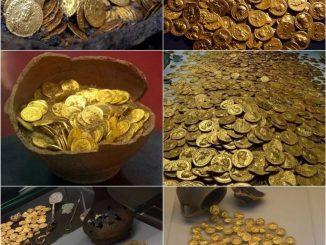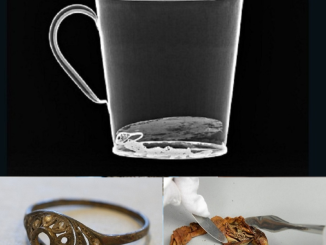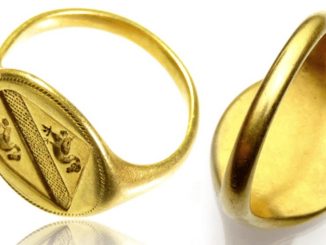Marine archaeologists were surprised to find gold and precious stone artifacts from the wreck of a Spanish cargo ship that sank hundreds of years ago.

Precious gold jewelry collected from the Maravillas shipwreck. Photo: Allen Exploration
The Spanish ship Nuestra Señora de las Maravillas (Our Lady of Wonders) carried so many luxurious treasures that when it sank in the Bahamas in 1656, countless salvage efforts took place over the next 350 years. So when archaeologists went on a recent expedition, they didn’t expect to find any remains. But contrary to expectations, the discovery included gem-encrusted pendants and gold chains that had been lying intact on the seabed for hundreds of years, Guardian reported on July 31. The ship sank west of the shallow waters of Little Bahama Bank more than 70 km from the mainland, but the new treasure was found scattered in an area spanning more than 13 km.
Allen Exploration Company, along with archaeologists and divers from the Bahamas and the US, was licensed by the Bahamas government to explore the Maravillas ship for scientific research. They also pledged to display the discovery at a new museum in the Bahamas.
The treasure includes an elaborate gold chain with a rose motif, suggesting some of the objects were intended for royalty or the wealthy aristocracy. A gold pendant depicting the cross of Santiago and set with an Indian bezoar, a stone that was very valuable in Europe hundreds of years ago for its healing powers. In addition, the archaeological team also found a gold pendant with the cross of Santiago covering a large oval emerald, surrounded by dozens of other square emeralds, which may represent the 12 apostles of God. Lord Jesus. Blocks of emeralds and amethysts dug in Colombia provide further evidence of smuggling activities because they were not included in the ship’s cargo declaration list.
Dr. Sean Kingsley, a British marine archaeologist and editor of Wreckwatch magazine, said the findings were especially noteworthy because they were located under a layer of compacted sand on the seabed.
The Maravillas sailed from Havana to Spain with treasures from the Americas sent by both royalty and private customers, along with smuggled goods and luxury goods from another merchant ship that sank off the coast of Ecuador. But at midnight on January 4, 1656, the ship sank due to a positioning error while trying to escape shallow water. Colliding with the leading ship, the ship crashed into a coral reef, only 45/650 people on board survived.
Allen Exploration is using cutting-edge technology to understand how the Maravillas sank and dispersed over the centuries. The expedition also collected data on coral reef health, seafloor geography and plastic pollution. Items from the treasure trove will be on display at the Bahamas Maritime Museum opening August/August in Freeport.


